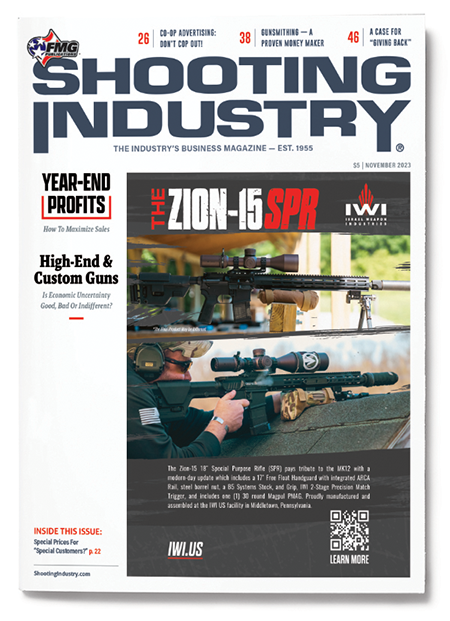Don’t Cop Out From
Co-Op Challenges
Let’s start off with a bit of trivia here: “Co-op” derives from the term “cooperative.” In the world of marketing, it’s when two entities work together to create and/or fund a marketing effort.
All too often, however, it doesn’t feel very cooperative. Firms can make the process tricky, arduous, fraught with roadblocks and downright frustrating. Don’t let it dissuade you from chasing down these dollars. Here’s why …
It’s Your Money, After All
First — and this is what motivated me back when I ran a shop — this is your money! You earned it by paying for and helping the manufacturer turn their manufactured goods back into cash.
Without you, the entire cycle breaks down and manufacturers would end up with warehouses full of products and no cash. Think of it as a savings account the manufacturer is holding onto on your behalf. What should put a fire in your belly, however, is this savings account vaporizes at the end of the year.
That’s right, the money you worked so hard to earn — risking cash, hiring the best staff, keeping the store open, selling online and everything else you face as a retailer — will just be surrendered to the pockets of the manufacturer at the end of the year as a very gracious Christmas present. If this is what you want to do with your money, so be it, but I wager you would rather use it for your own benefit. If I’m right, read on. Let’s explore further why co-op dollars can make a massive difference in your business.
Know your sales volume over the past 12 months, be able to show the shop’s horsepower to push products across the counter and have a marketing plan prepared and ready to go.
Breaking It Down
For those who have not explored the world of co-op marketing dollars, here it is in a nutshell. Many manufacturers set aside monies a retailer can use to pay for marketing efforts for their store. These marketing pieces must be co-branded with the manufacturer to get access to these dollars, but it’s still a focused marketing effort for each store.
Manufacturers that participate in programs like this will often credit a retailer anywhere from 1% to 4% of their total purchases for the year. This may not sound like much, but at the end of the day, it’s a pile of cash waiting to be used. If you stepped out the back door of the shop and saw a pile of cash lying on the ground to the tune of 1% of your sales, would you just leave it there? Of course not!
Let’s look at it through a different lens to get you up off the couch and start aggressively using these co-op funds. Imagine if your business were to run exactly the same, day to day, month after month, and produce the same volume of sales at the same profit levels — totaling $500,000 in annual sales. If the total co-op funding for your entire store added up to only 0.2% of the total revenue, this would add an extra $1,000 of spendable cash to your store at the end of the year (i.e., pure profit).
The truth is, by playing your cards right and maximizing the co-op opportunities, there could be a four-, five- or even six-fold increase in this. This co-op could mean the difference between going to Outback Steakhouse for “vacation” or heading to a tropical island. The choice is yours, but I know which one I’d shoot for.
Overcoming Challenges
In canvassing numerous retailers around the country, I couldn’t find a single retailer who is asking their manufacturers for financial assistance in marketing their store and the brand’s products.
I received answers ranging from “It’s too difficult,” to “I didn’t know that was an option” or “There aren’t any programs out there now other than ‘Stocking Dealer Programs.’” My advice: Even if the manufacturer you want to work with doesn’t have a published co-op program, it doesn’t hurt to ask.
Manufacturers right now are struggling to clear their shelves, and putting out a hand to work with them to help solve this problem should be welcomed with open arms. If not, it might bring to question whether or not you should be selling this brand’s products in the future. It takes the entire supply chain working together to truly succeed in market conditions like we’re experiencing.
Before asking, however, make sure to have your ducks in a row. Know your sales volume over the past 12 months, be able to show the shop’s horsepower to push products across the counter and have a marketing plan prepared and ready to go. Rehearse your pitch before the call and know exactly how much you’re asking for. By being prepared, you’re far more likely to get a “yes” and if it is a “no,” keep asking!
Even if the manufacturer you want to work with doesn’t have a published co-op program, it doesn’t hurt to ask.
Support Those Who Support You
Here are a few tips to help maximize the return on co-op dollars and add a few days onto that island getaway. Start by looking for the manufacturers with the most generous co-op programs and focusing inventory on these items. Look for ones north of 2% of your prior 12-month sales. If this brand is one you feel can be sold over an even more popular one, why not focus your team’s efforts on advocating for a brand that not only makes great products but also takes care of its retailers at the same time?
In challenging markets like we’re in right now, why not support the manufacturers that respect and reward what you do for their bottom line? Next, let’s examine creating a marketing plan that generates focused sales or events around the more generous brands.
Having an “XYZ brand” event on a weekend not only can create buzz for your shop but also increase the volume of products being sold that qualify for co-op dollars. As a bonus, having these branded events can help tap into “Co-op Dollars’” lesser-known sibling, “TDF” or Territorial Development Funds. TDFs are discretionary dollars used by manufacturers to help boost sales and/or awareness of their products in a local market. They’re not directly calculated based on sales volume but based more on the relationship with the brand and its representative. If you are having a sales event focused on brand marketing, absolutely ask for some TDF money, because it can sing to the tune of thousands of dollars depending on the event, market and size of your business. (This may generate enough extra funds to take two tropical island vacations!)
Worth The Effort?
Lastly, take away some of the burden in collating all this information and centralize your inventory buys around fewer vendors and distributors.
When doing this, ask your rep to do the legwork and consolidate invoicing for each brand so you can get back to the more important day-to-day tasks of running a business. By delegating this task, your rep turns into a productive part of the team beyond just “selling me stuff.”
Yes, managing co-op dollars can be a challenge, and that’s the point. If it wasn’t worth it, it wouldn’t be hard. At the end of the day, every dollar secured will contribute nearly one-to-one to the bottom-line profits, hold you accountable for marketing your business and get an unfair share of the local (and challenging) market.
The choice is yours — and I hope to see you on an island somewhere.





